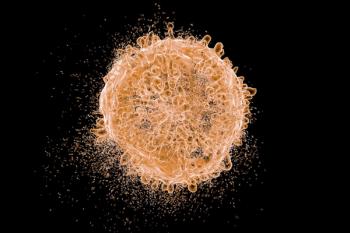
FDA Warns of Rare Cancer Linked to Breast Implants
The FDA has recently released a statement identifying a new rare T-cell lymphoma caused by breast implant surgery.
[[{"type":"media","view_mode":"media_crop","fid":"58092","attributes":{"alt":"","class":"media-image","id":"media_crop_2201793411108","media_crop_h":"0","media_crop_image_style":"-1","media_crop_instance":"7328","media_crop_rotate":"0","media_crop_scale_h":"0","media_crop_scale_w":"0","media_crop_w":"0","media_crop_x":"0","media_crop_y":"0","title":"Image © kpakook / shutterstock.com","typeof":"foaf:Image"}}]]
The US Food and Drug Administration (FDA) has recently released a statement identifying a new rare T-cell lymphoma called breast implant–associated anaplastic large cell lymphoma (BIA-ALCL). To date, nine deaths stemming from this rare disease have been reported to the FDA.
The link between implants and ALCL was first identified in 2011. At that time, the FDA only knew of a few cases and was not able to determine what factors increased risk for ALCL.
Since 2011, the FDA strengthened its understanding of the association and now agrees with the World Health Organization designation of BIA-ALCL as a rare T-cell lymphoma that can develop after breast implant surgery.
According to the
The FDA is not currently able to determine the exact number of cases of BIA-ALCL; however, at this time it appears that the disease occurs most frequently with implants with textured surfaces rather than those with smooth surfaces.
The FDA reported that as of February 1 it had received 359 medical device reports of BIA-ALCL, including nine deaths. Of these reports, 231 included information on the implant surface; 203 were reported to be textured implants and 28 were smooth implants. Of the 359 reports, 312 had information on implant fill types; 186 were silicone gel and 126 were saline implants.
The FDA is recommending that physicians should continue to provide their patients with breast implants with routine care and support. When BIA-ALCL occurs, it has been identified most frequently in patients undergoing implant revision operations for late-onset, persistent seroma. Prophylactic breast implant removal in patients without common symptoms, such as pain, lumps, swelling, or asymmetry, is not recommended.
Physicians should report all confirmed cases of ALCL in women with breast implants to the FDA and submit case reports of BIA-ALCL to the PROFILE registry to contribute to better understanding of the causes and treatments.
Newsletter
Stay up to date on recent advances in the multidisciplinary approach to cancer.
































































































